THE SCIENCE REBEL
Glenda Gray, the tiny yellow elephant and the search for lifesaving vaccines

As Professor Glenda Gray sees out the final months of her 10-year term at the South African Medical Research Council, she looks to what lies ahead and why her new work will matter as much.
There’s a tiny yellow elephant about the size of an adult’s thumb that sits on Glenda Gray’s desk.
Gray is a professor in the School of Clinical Medicine at Wits University and is internationally acclaimed for her research in HIV vaccines and activism to stop mother-to-child transmission of HIV. This winter she announced she would be stepping down from her role as president and chief executive of the South African Medical Research Council (SAMRC) when her term comes to an end in February 2024.
She calls the elephant her totem for success and protection. Its curled trunk reaches skywards and she’s placed it so it looks outwards from her desk. In this position her totem holds a kind of symbolism, trumpeting a next step for the trained paediatrician as she clocks up 10 years at the SAMRC.
“Most of my jobs have been 10-year jobs. I was the CEO of the prenatal HIV research unit for 10 years and I remained part of that unit. I still have grants and staff I work with at the perinatal HIV research unit at Chris Hani Baragwanath Hospital. Then I’ve been in this job for 10 years, that’s really been the best job of my life. Now I’m looking forward to another 10 years doing impactful research and going back to science.
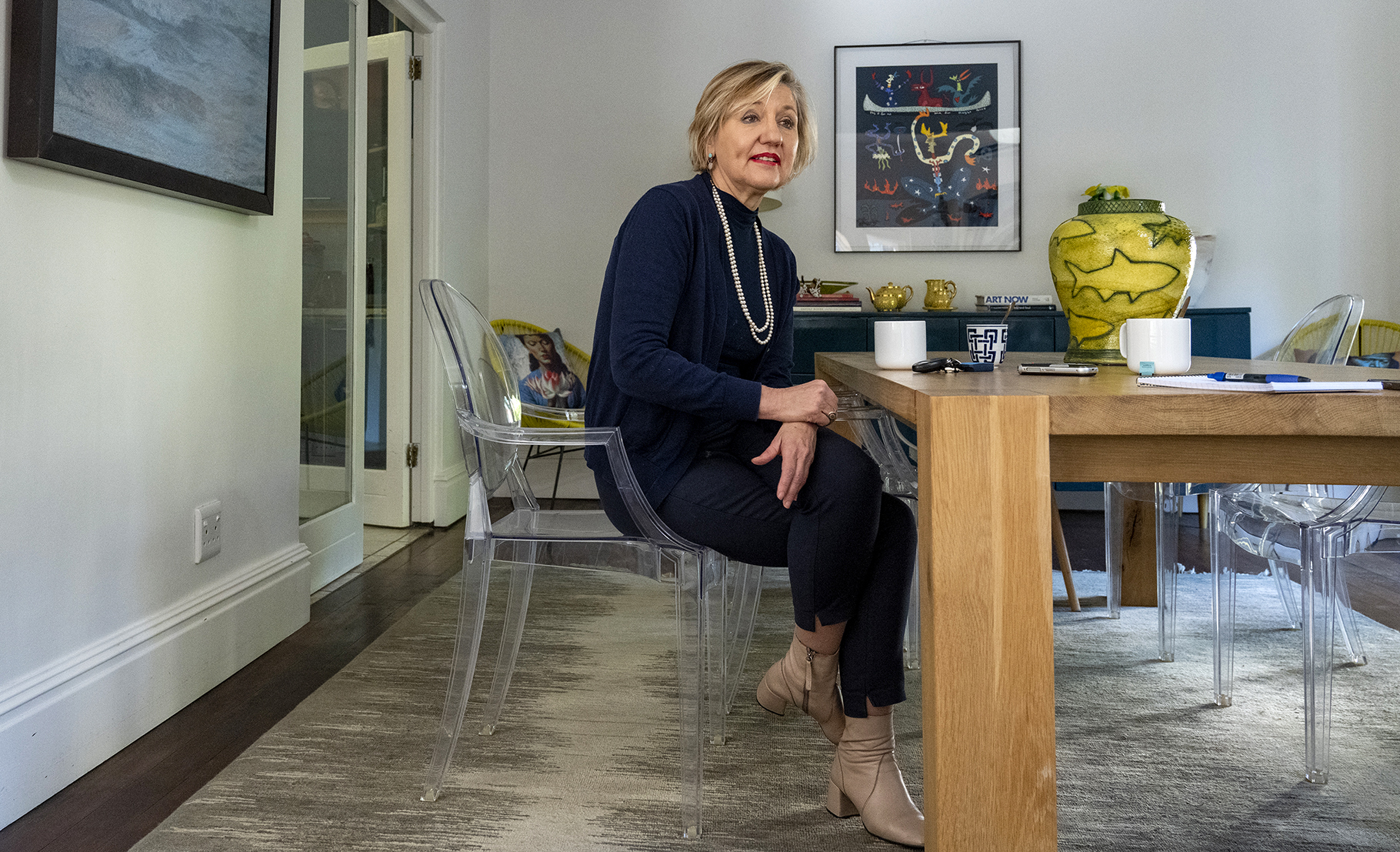
Professor Gray in Cape Town on 26 July 2021. (Photo: Gallo Images / Die Burger / Jaco Marais)
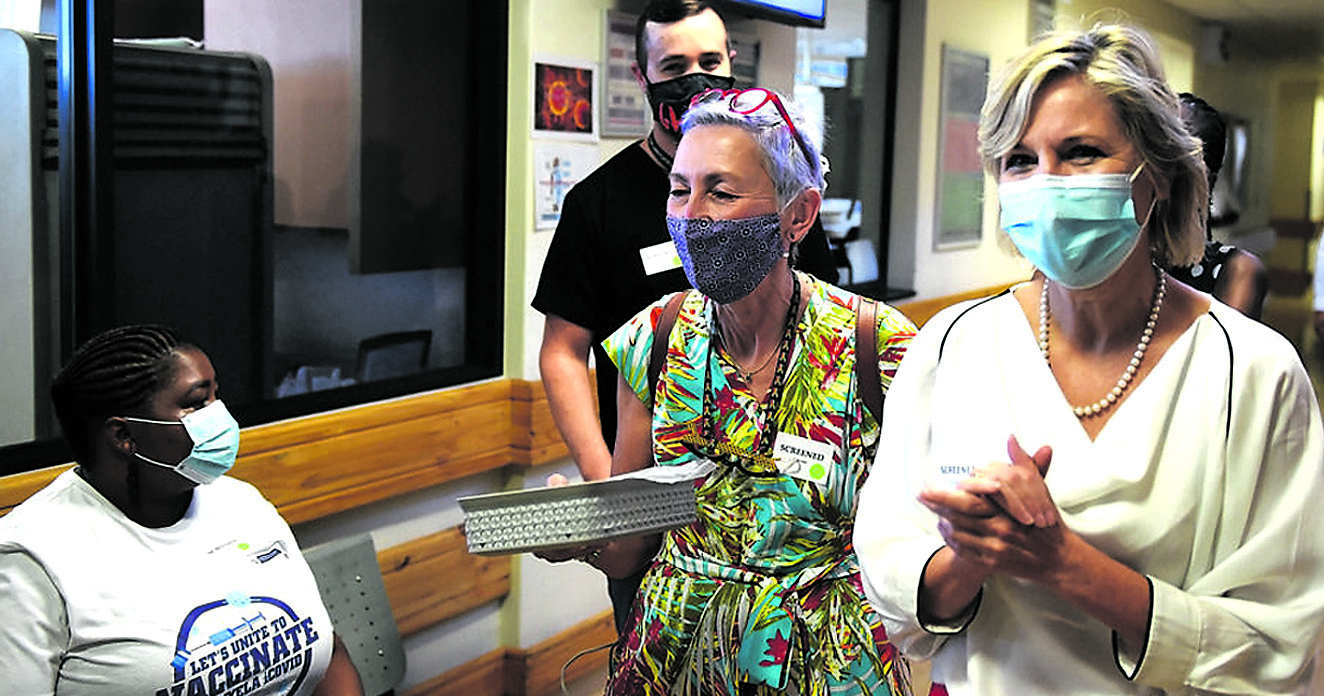
World-renowned scientists and principal investigators on South Africa’s Sisonke Vaccine Study Prof Linda-Gail Bekker (left) and Prof Glenda Gray (right) carry Johnson & Johnson vaccine doses ahead of vaccinating President Cyril Ramaphosa and former minister of health Zweli Mkhize at the Khayelitsha District Hospital on 17 February 2021. (Photo: Xabiso Mkhabela).
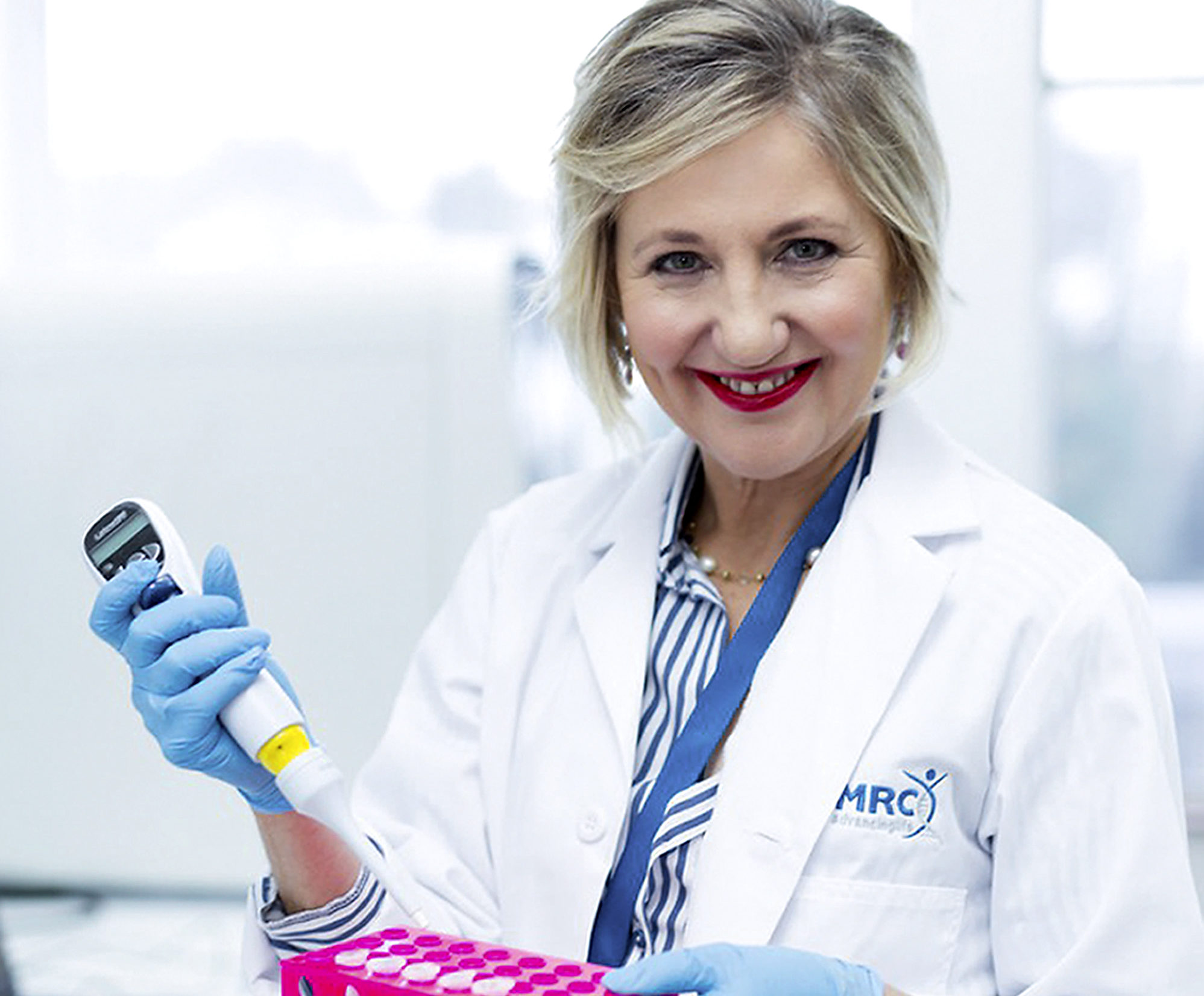
Professor Glenda Gray, president of the South African Medical Research Council. (Photo: GroundUp/South African Medical Research Council )
“There’s a huge opportunity to be enrolled in vaccine discovery, vaccine manufacturing and vaccine science. I will be focused on HIV vaccines, and vaccine discovery also for infectious diseases, pandemic preparedness and positioning the country to meet the challenges of emerging problems,” she says.
Gray was a principal investigator for the Sisonke trial and study, along with Professor Linda-Gail Bekker, the executive director of the Desmond Tutu HIV Centre at the Institute of Infectious Disease and Molecular Medicine. As part of the Sisonke trial they were pivotal in securing the Johnson & Johnson vaccine for 500,000 frontline healthcare workers in early 2021. This was a time when the Covid-19 pandemic was raging and death, fear and uncertainty marked our every day. Getting shots into the arms of healthcare workers was crucial.
Even as a child, Gray’s instincts were to help and heal. She grew up the fifth of six children in a working-class family in Boksburg. She remembers being the one who brought home stray dogs. “I remember my father saying ‘no more dogs’ but then we would rescue another dog so there were always a lot of animals around,” she says.
Her dad, who worked for the mines on the East Rand, died when she was 16. The family was poor and sometimes groceries didn’t stretch to the end of the month, she remembers. Her government school was underfunded and it was rare that someone with aspirations to get into medical school made it.
“Coming from a simple background and understanding poverty gives you some access to humanity. Growing up in a family that encouraged education also made a difference and being conscientised about apartheid and becoming politicised as a teenager with a brother at Wits who was part of Nusas (National Union of South African Students) also helped,” she says.
But finding her humanity came with being a young doctor working in wards in a time of apartheid segregation. It cemented her love for her profession, as well as her activism and need to act.
It was in 1993 as a young graduate from Wits University, based at then Baragwanath Hospital, that she started seeing the first HIV-positive babies being admitted. Children were dying and Gray recounts the dread as one in two babies was being born HIV positive and there was no medical intervention to save them.
The moment when ARVs were finally rolled out in 2004 and people no longer died from HIV was ‘the single most profound experience I’ve had in my life’.
“Any loss of life is traumatic, but losing a child and being with grieving parents impacts you greatly,” she says.
It would lead her and her colleague James McIntyre to set up the perinatal HIV Clinic at Bara in 1996 and also lead to her now lifelong research in a quest to develop an HIV vaccine. In a time of Aids denialism and even before HIV was recorded as a cause of death, the clinic’s work was deemed subversive, she remembers. But it stood as pushback against the government’s devastating head-in-the-sand approach to the disease.
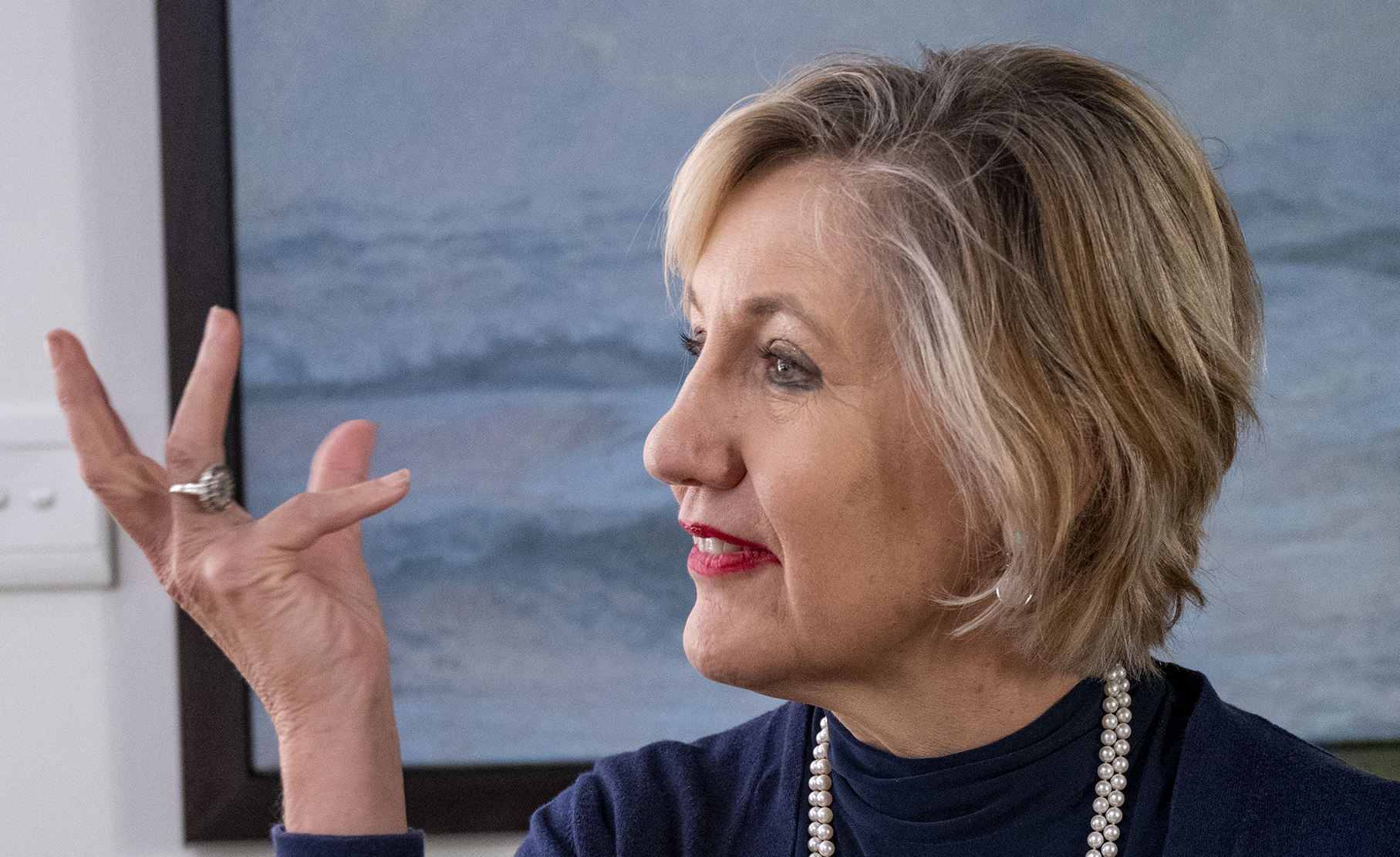
Professor Gray says that ‘coming from a simple background and understanding poverty gives you some access to humanity’. (Photo: Gallo Images / Die Burger / Jaco Marais)
In a reflection piece she and McIntryre wrote for Wits University in 2016, they recounted the controversy they caused, also the political interference in attempts to stop their research and block funding. They were also demonised by the then president, Thabo Mbeki, who openly slated the HIV activists and scientists.
Read more in Daily Maverick: HIV infections decreasing in South Africa but millions at increased risk as global response falters
“[It] had a devastating impact on the work we were doing. It legitimised the position taken by denialists and made us targets,” they wrote.
But they didn’t relent. Their work made the clinic at Bara one of the first public-sector sites to conduct antiretroviral treatment trials in adults and children, thereby making the lifesaving treatment available to people in Soweto in the 1990s already.
There’s also bullying and sexism leading to what she calls the ‘leaky pipeline’. It diverts women scientists to drip into technical jobs over leadership roles.
It would, however, be the moment when ARVs were finally rolled out in 2004 and people no longer died from HIV that she says was “the single most profound experience I’ve had in my life”. She tells of living through the so-called Lazarus effect at a Soweto clinic she helped run at the time. “From being a place with stretchers, wheelchairs and oxygen tanks there were suddenly people standing up and walking around. There were children who would lie on benches too sick to go to school but then on treatment you’d see them colouring in, getting fatter, laughing and feeling joy,” she says.
This preciousness of life and the right to have a fighting chance to live made Gray a health activist and an outspoken patient advocate. It continues to land her in hot water with Health Department bureaucrats sometimes and it’s also led to her being muzzled. Most recently there was the backlash from her comments about the severity of lockdown rules adding to a spike in malnutrition in children that she picked up at Chris Hani Baragwanath Hospital during the pandemic.
“In my provocative nature I do shoot from the hip and it can sometimes get me into trouble, but it is a response that comes from instinct and feeling angry at the injustice of the system,” she says.
Bullying and sexism
Gray, though, has also learnt that high-profile roles come with a poisonous whiff of politicking. There’s also bullying and sexism leading to what she calls the “leaky pipeline”. It diverts women scientists to drip into technical jobs over leadership roles.
And Gray’s role is very high-profile. She was named among TIME magazine’s 100 most influential people in 2017 and received the Order of the Baobab in 2012, among a clutch of accolades and awards.
“In leadership roles you do come in for a lot of criticism and it’s a very patriarchal arena. There’s subliminal bullying and biases against women. Think how even calling a woman a ‘career-woman’ is stigmatising – you hardly even hear of a man being referred to as a ‘career man’,” she says.
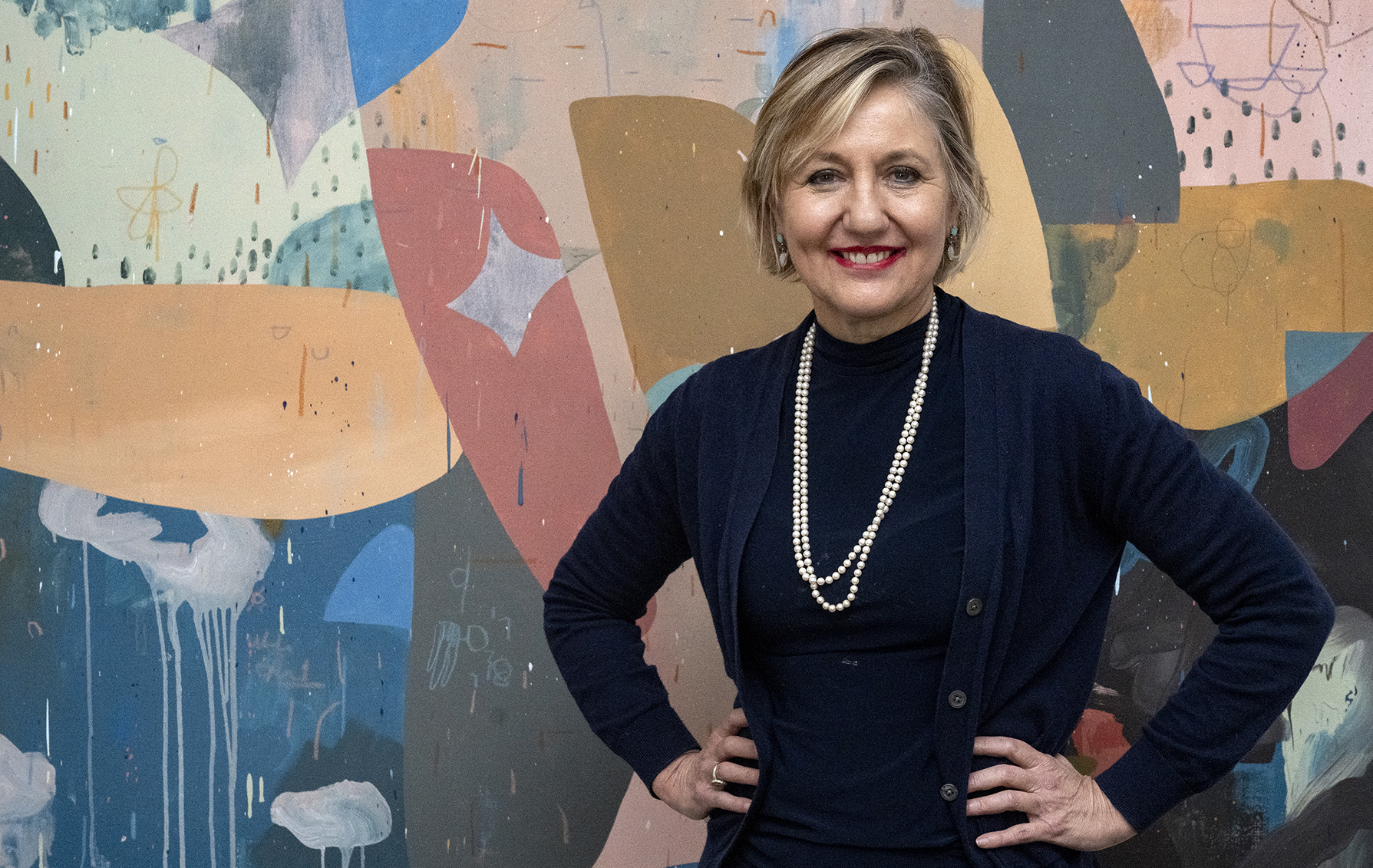
The preciousness of life and the right to have a fighting chance to live made Professor Glenda Gray a health activist and an outspoken patient advocate. (Photo: Gallo Images / Die Burger / Jaco Marais)
It’s been essential for her to build strong teams and also to have professional sounding boards. There are trusted colleagues and allies who listen with little judgement but have the necessary insight to relate. Sometimes it’s a call from former health ombudsman Professor Malegapuru Makgoba. His own exit from his position this year has allowed him to share perspectives about the moment when “long enough” arrives. It could also be the gift of a story; from friend and fellow scientist Linda-Gail Bekker it was a copy of the 2022 bestseller Lessons in Chemistry by Bonnie Garmus.
Sometimes the one-time vegetarian turns inward to the teachings of Buddhism and Stoicism. It’s to reflect on the reality of the lack of a permanent self, non-attachment maybe or working on mastery over destructive emotions.
The role at the SAMRC, Gray says, was one she was literally married to – one that’s demanded her all and that she’s regarded as a service to the country. But it paid off. With Gray at the helm the SAMRC has had consecutive clean audits. She’s also been credited for transforming grant funding for young scientists, black scientists and women scientists, and establishing key partnerships and collaborations to advance science research.
“I regret… that there is never enough time. Even though I leave the SAMRC on a good financial footing I will always have wished to have achieved more funding for research,” she says.
But now it needs new blood, she says. Agendas are shifting too in a changed world. There are health impacts from the climate crisis, coming pandemics and the ticking time bomb of noncommunicable diseases, such as cardiovascular disease, to prepare for.
The mom of three children, two daughters and a son, aged 18, 26 and 30, is at a moment of reflecting on time passing through her children becoming young adults. Building up the next generations means her role as active mentor has deepened. For her own young humans she is hopeful they will add to finding solutions for a new world. She notes that they’ve all inherited her “hard-work gene”. It’s why she says with a laugh that they’ll probably be less convincing in getting her to use up her accumulated leave days to take a long-promised breather at their Nieu-Bethesda holiday home – a favourite way to recharge.
Gray says it’s because she’s rearing to go. She’s glimpsed the outward gaze of her totem elephant. Its yellow trunk points in the direction of new vaccine research horizons and she likes what she sees very much. DM


















 Become an Insider
Become an Insider
Comments - Please login in order to comment.